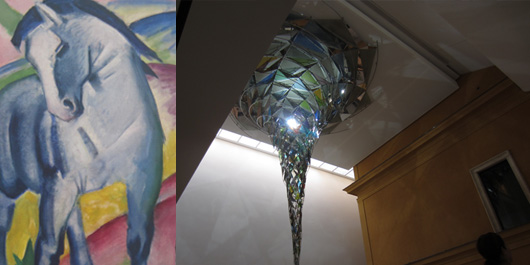Big parts of the city were destroyed during the Second World War. As far as possible, Munich recreated its organically developed urban structure. But the last years the city is developed into a modern city with many new contemporary buildings, all with respect of its history. Munich is determined to continue this development in the future.
We visited the Lenbach haus, the extension is designed by Foster and opened last spring. The interior is designed with great feeling for detail, but the museum has an exquisite collection of ‘Der blaue reiter’. Never saw such a huge collection of Kandinsky at one place.
The façade of the Brandhorst museum is beautiful, it looks like an abstract painting. It's made of ceramic rods in different colours. The Brandhorst museum exhibits art from the second half of the 20th century.
Unfortunately the Pinakothek der Moderne was closed, it also housed the Design Museum and the biggest collection of scale models of several well-known buildings from all over the world. Big bummer! But they built an ‘ausstellung’ (sort of an installation) outside, great fun for the kids!
The Jewish centre is located in the hart of the city centre. The Munich synagogue, besides the Jewish centre, is not accessible for tourist. The facades are made of travertine. On top of this plinth there a sort of a lantern in woven bronze metal, it filters the light in the synagogue.
and many, many more ... there is just too much to see.
More info about al the museums in Munich.
Other post about our trip:
Read about part 1: Munich suburb
Read about part 2: Silent witness









No comments:
Post a Comment